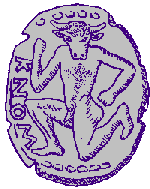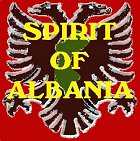
After
some enquiries on my return home I found that this ikon was
almost certainly not from a church, but was an unusual example
of a domestic ikon depicting the fifth century Saint Simeon
Stylites on his column, Saint Stylianos holding a child, and
the legendary second century Saint Onouphrios (Humphrey), who
lived in the desert for forty years 'clad only in his hair'.
The cult of St Onuphrius was popular throughout Christendom, East and West, in the Middle Ages, initially with monks, and then in general. St. Onuphrius (also known as Onouphrius of Egypt, Onuphrius, Onofrio, Onofre, Humphrey and Onuphrius the Great) died around 400 CE. When Abbot Saint Paphnutius was trying to discern whether the eremitical life was for him, he met Onuphrius, who had been a hermit for 70 years in the desert beyond Thebais in Upper Egypt. Paphnutius was affrighted at the Saint's appearance, seeing him covered with hair and leaves like a wild beast. (Thus he is the patron saint of weavers.) Onuphrius told him that he had been a monk in an austere monastery of 100 monks near Thebes but, having felt called to imitate Saint John the Baptist, had left to follow the eremitical life. He related that he had struggled for many years against grievous temptations, but by perseverance overcame them. Paphnutius was amazed when food miraculously appeared for their evening meal. Otherwise, Onuphrius lived on the fruits of a date palm-tree that grew near his cell. The abbot spent the night with the hermit. The next morning Onuphrius told Paphnutius that the Lord had told him he, Onuphrius, was soon to die and Paphnutius had been sent by the Lord to bury him. This indeed came to pass, and Paphnutius buried the saint in a cave or rocky cleft. Although he desired afterwards to remain in the Saint's cave, as soon as he had buried him, the cave fell in and the palm tree which had furnished the Saint with dates withered and died, indicating that it was the will of God that Paphnutius return to his monastery and make Saint Onuphrius known to all.
For a riveting
translation of the Life of Saint Onuphrius see:
Saints Onuphrius, Makarius of Egypt, and Peter of Athos
“The Island of Men with Long Beards” -
|
click here to read
about holy  dogs and dog-headed saints
dogs and dog-headed saints

Click on this image to go to
an Albanian archæological web-site
Albanian Ottoman Architecture >
a
canadian-albanian film
about the "sworn
virgins"
of northern albania
Filmi
kanadezo-shqiptar, Gruaja pa krahë'
sapo ka
fituar çmimin e argjendtë ‘Remi Award',
si pjesëmarrës në ‘Houston Worldfest 2003'
në Teksas.





